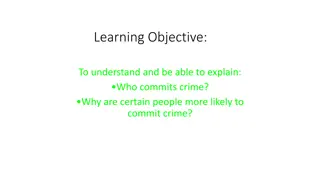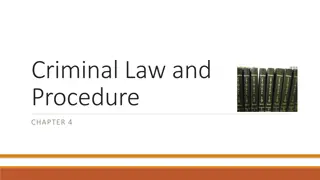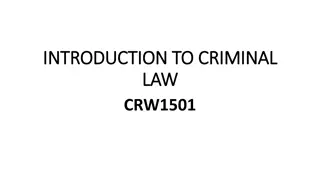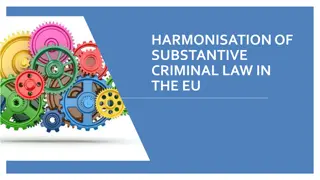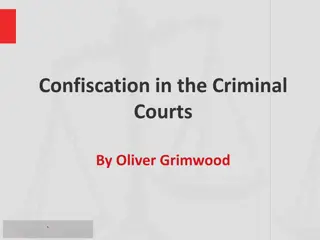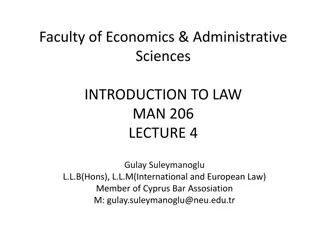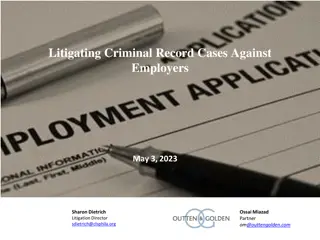Understanding Changes in Criminal Law and Child Safe Standards
Exploring the reasons behind recent changes in criminal law and child safe standards at both Commonwealth and State levels. Delving into the Commonwealth Royal Commission findings on child sexual abuse and the subsequent reforms being implemented. Highlighting the key aspects of child safe standards and the operational implications for organizations. Emphasizing the importance of embedding a culture of child safety and the implementation of mandatory standards to protect children.
Download Presentation

Please find below an Image/Link to download the presentation.
The content on the website is provided AS IS for your information and personal use only. It may not be sold, licensed, or shared on other websites without obtaining consent from the author. Download presentation by click this link. If you encounter any issues during the download, it is possible that the publisher has removed the file from their server.
E N D
Presentation Transcript
Outline for this session Why are things changing? Criminal law changes What does that mean at an operational level ? Child safe standards Broad overview Next steps
Why is there change ? Commonwealth Royal Commission : the management and response to child sexual abuse Betrayal of Trust is a report on a Victorian Parliamentary inquiry into the handling of child abuse by religious and other non-government organisations. The report found the majority of children are safe in organisations, but organisational responses to child safety varied. The report made a number of recommendations that are being implemented.
Changes at a State level Criminal law reform Offences related to grooming Failure to protect Failure to disclose Creating child safe organisations Mandatory child safe standards Reportable conduct scheme Civil law reform Removal of time limit on legal action
Child Safe Standards Standard 1: Strategies to embed an organisational culture of child safety, including through effective leadership arrangements Standard 2: A child safe policy or statement of commitment to child safety Standard 3: A code of conduct that establishes clear expectations for appropriate behaviour with children Standard 5: Processes for responding to and reporting suspected child abuse Standard 6: Strategies to identify and reduce or remove risks of child abuse Standard 4: Screening, supervision, training and other human resources practices that reduce the risk of child abuse by new and existing personnel Standard 7: Strategies to promote the participation and empowerment of children
Standard 1: Organisations must have strategies to embed an organisational culture of child safety, including through effective leadership arrangements. A culture of child safety is enhanced by recognising the importance of child safety at all levels of the organisation, including leadership (board, committees, CEO), staff and volunteers.
Standard 2: Organisations must have a child safe policy or statement of commitment to child safety. A child safe policy is an overarching document that provides key elements of child safety. A statement of commitment is an affirmation of the organisations commitment of child safety.
Commitment to child safety The City of Port Phillip has zero tolerance for child abuse. The City of Port Phillip is a committed Child Safe organisation. Our commitment is to ensure that a culture of child safety is embedded into our practices and processes. Every child accessing City of Port Phillip has the right to feel and be safe. This City embraces diversity and inclusion. All children, regardless of their gender, race, religious beliefs, age, disability, sexual orientation, family background and social background, have equal rights to protection from abuse. We firmly commit to the cultural safety of Aboriginal and Torres Strait Islander children and children from culturally and/or linguistically diverse backgrounds, and to the provision of a safe environment for children with a disability, as well as other vulnerable groups of children. All City of Port Phillip Councillors, employees, volunteers, contractors and community representatives have a responsibility to understand and activate their role in preventing, detecting, responding and reporting any suspicions of child abuse to the relevant authorities, and maintaining a child safe culture.
Standard 3: Organisations must have a code of conduct that establishes clear expectations for appropriate behaviour with children. A clear and specific code of conduct provides all staff and volunteers with a set of clear principles about how they should behave in a child-safe environment.
Standard 4: Organisations must have screening, supervision, training and other human resources practices that reduce the risk of child abuse by new and existing personnel. Ensure new and existing staff/volunteers understand the importance of child safety, are aware of policies and procedures, and are trained to minimise the risk of child abuse.
Standard 5: Organisations must have processes for responding to and reporting suspected child abuse. Ensure child safety is the priority and respond accordingly ie suspend alleged perpetrator or arrange alternate duties with no contact with children. Ensure a supportive environment for staff, children and families who report allegations of abuse or child safety concerns.
Standard 6: Organisations must have strategies to identify and reduce or remove the risk of child abuse. Organisations need to adopt a risk management approach - develop, record and communicate clear processes for evaluating and removing risks to children.
Standard 7: Organisations must have strategies to promote the participation and empowerment of children.
How will your club/ organisation work together to affect this cultural change? Consider : - What is already in place? - What is missing ? - What will support you ?
Resources Commission for Children and Young People: CSS and Reportable Conduct Scheme Australian Childhood Foundation Centre for Excellence in Child and Family Welfare : on line training about the CSS and RCS Child Safety Toolkit: How to Create a Child Safe Organisation Child Wise : Understanding abuse eSafety Commissioner : on line safety Kids Central Toolkit : engaging with the children and young people Vic Sport : child safe standards resources
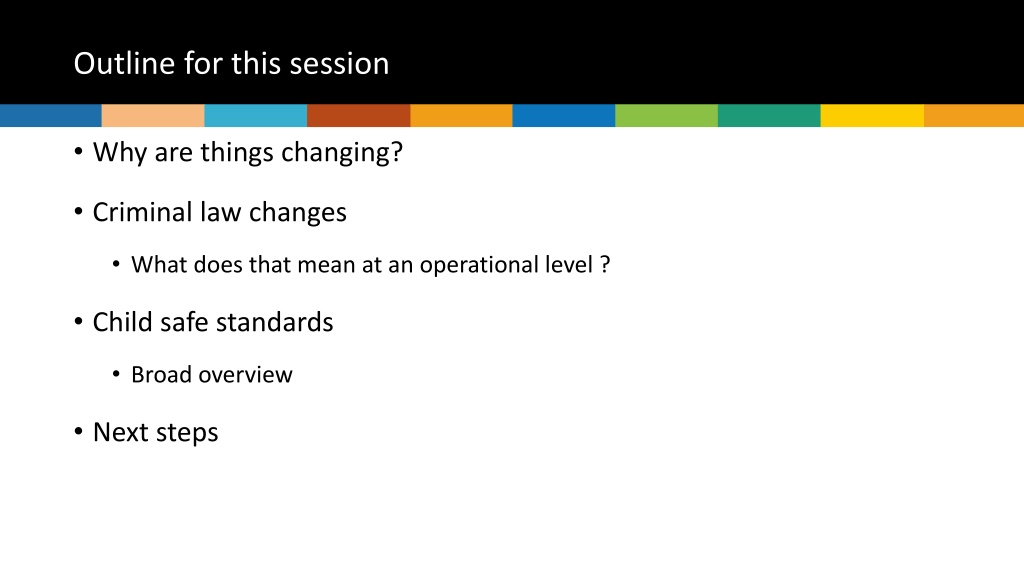

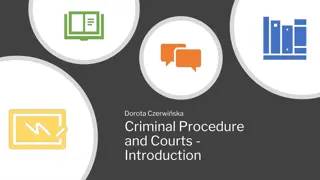
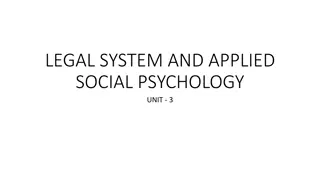
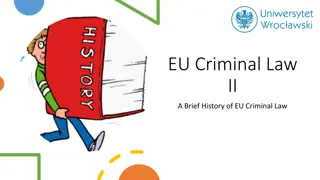

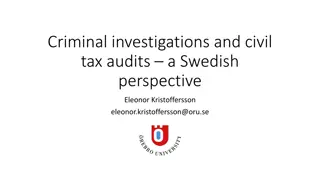
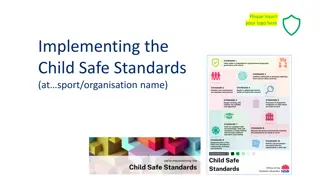

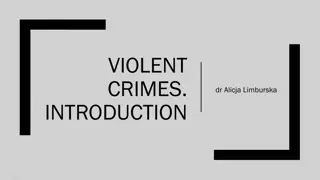
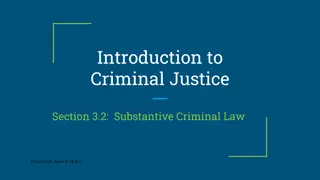




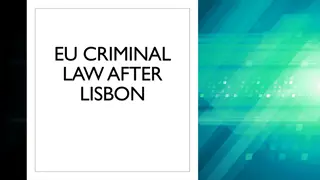
![Briefing on the Criminal Procedure Amendment Bill [B12-2021] to the Portfolio Committee on Justice and Correctional Services](/thumb/157093/briefing-on-the-criminal-procedure-amendment-bill-b12-2021-to-the-portfolio-committee-on-justice-and-correctional-services.jpg)
